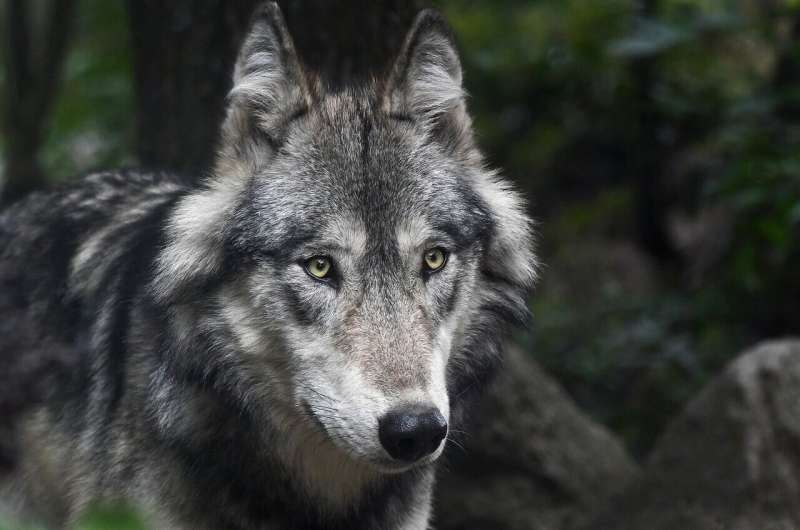Credit: CC0 Public Domain
A pack of gray wolves may have been spotted in northwest Colorado just one day after a measure to reintroduce the species throughout the state won approval to appear on the 2020 ballot.
Scientists working with the Rocky Mountain Wolf Project cautioned however that a few unconfirmed wolves, or even a single pack, is likely not enough for a viable population of wolves in Colorado. Group members stressed recovery will only happen if Colorado chooses to reintroduce these ecologically essential carnivores to the western half of the Centennial State and provide protection for them.
"We're glad there may be a wolf family in Moffat County, but those animals are still vulnerable to legal killing in adjacent Wyoming and Utah," said Michael Robinson of the Center for Biological Diversity. "Nothing aside from passage of Initiative 107 will ensure that Colorado will have a wolf population to keep the natural balance for our children and grandchildren."
Wolves are endangered in Colorado, and there are penalties and fines for harming or killing them. Individual wolves that have entered Colorado in the past 20 years have not survived.
"We know that individual wolves occasionally make the treacherous journey from Yellowstone through southern Wyoming," said Diana F. Tomback, a professor of conservation biology at the University of Colorado Denver. "Reports of lone wolves wandering through Yellowstone, Montana, and Idaho had circulated for years. It wasn't until we deliberately reintroduced wolves to Yellowstone that recovery became possible. Colorado is in the same boat."
Colorado currently has no plan in place to ensure recovery of wolves and compensation to ranchers for the small amount of livestock that might be lost each year.
"News of wolves possibly wandering in northern Colorado isn't particularly new, but it does show how important it is for Colorado voters to pass the wolf reintroduction ballot initiative in November," said Rob Edward of the Rocky Mountain Wolf Action Fund. "That way, any wolves that wander down here will have a chance to establish a family and help to restore the balance to Colorado's wild places."
Background
The federal government reintroduced wolves to Yellowstone and Central Idaho 25 years ago. Wolves from those tiny seed populations have since reclaimed parts of Washington, Oregon and Northern California. Northern Colorado has seen only a few lone wolves wander into the state during that same period. Because southern Wyoming lacks the abundance of prey found in Idaho, Montana and the Pacific Northwest, solitary wolf visitors to Colorado have not established themselves in the state.
Further, Wyoming classifies wolves as "predatory animals" outside of Yellowstone south to the Colorado border, allowing them to be shot anytime, in any number, with no license.
Provided by Center for Biological Diversity
























